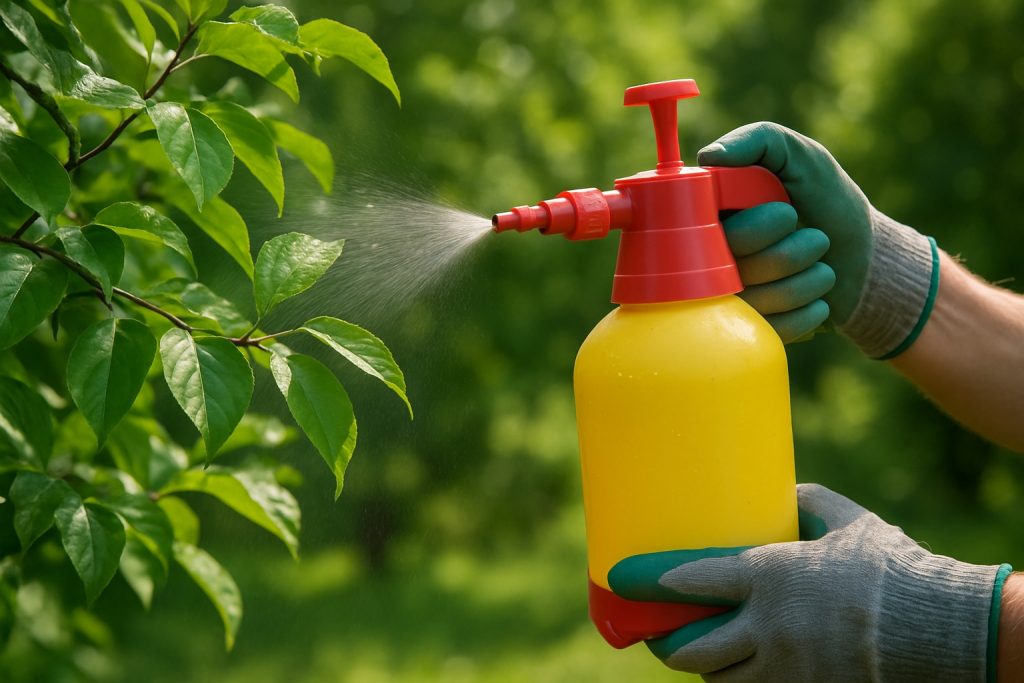Tree Disease Treatment in Glen Mills, PA
In Glen Mills, where suburban charm meets preserved woodlands, healthy trees are more than just scenery—they’re part of the community’s character. But when disease sets in, that living beauty is at risk. If your trees are showing signs of stress—browning leaves, thinning canopies, cankers, or bark abnormalities—it’s not just a seasonal shift. It could be a deeper issue that requires expert attention. Acting quickly can mean the difference between preservation and removal. With proper diagnosis and scientifically grounded care, many trees can recover, regrow, and once again become the cornerstones of your landscape.
What Makes Tree Disease So Common in Glen Mills
While Glen Mills boasts a picturesque climate perfect for diverse tree species, its environmental conditions can also foster disease. Moisture-rich summers paired with shaded residential lots create ideal conditions for fungal growth. Anthracnose, root rot, and powdery mildew are frequently observed here—particularly in native oaks, maples, and ornamental cherries.
Insect activity can accelerate tree decline, with scale insects, borers, and aphids weakening defenses and transmitting pathogens. The interplay between pests, moisture, and temperature creates a complex environment where disease can escalate quickly if not addressed. Tree owners in Glen Mills must be particularly vigilant during periods of high humidity and after heavy rains—times when fungal spores spread most aggressively.
Early Signs and Why They Matter
Many tree diseases begin subtly. Yellowing or browning of leaves, premature leaf drop, or irregular growth patterns may seem harmless but are often early warning signs. Bark lesions, cracking, or unexplained sap flow can indicate internal decay or infestation. The key to saving a tree is catching these signals early. Tree owners should never ignore patterns of decline, even if symptoms appear minor.
Visual signs alone, however, can be misleading. Two diseases may produce similar symptoms but require vastly different treatment approaches. That’s why a thorough diagnosis—from both above and below the soil line—is essential.
The Diagnostic Process: More Than a Surface Check
Effective treatment starts with expert evaluation. Our approach goes beyond visual inspection. We assess root integrity, soil health, canopy density, and species-specific vulnerabilities. In some cases, we collect samples for lab testing to pinpoint fungal or bacterial strains. We also consider the surrounding environment: construction impact, water drainage, sun exposure, and nearby vegetation can all influence tree health.
Once the diagnosis is complete, a tailored treatment plan is developed. There is no one-size-fits-all solution in professional arboriculture, especially in a location like Glen Mills, where ecological diversity is part of the landscape’s signature.
Custom Treatment Solutions Backed by Science
Depending on the nature of the disease and the tree’s condition, treatment may involve targeted fungicide applications, soil injections to enhance nutrient uptake, or insect control measures to eliminate harmful vectors. For trees suffering from root issues, aeration or bio-stimulants may be introduced to restore vigor. Our treatments are environmentally responsible and always chosen to support long-term tree vitality, not just a quick fix.
We also help homeowners implement cultural changes—adjusting irrigation patterns, pruning methods, or mulching practices—to prevent disease recurrence. Education is an essential part of what we offer, so property owners understand not just what’s happening, but why it’s happening, and how to prevent it in the future.
Why Local Knowledge Matters
Tree health isn’t just about science—it’s about location. In Glen Mills, understanding the rhythms of the seasons, the dominant tree varieties, and the local pest populations gives our arborists a distinct edge. A treatment plan designed for another region might fall flat here. Our experience treating trees specifically in this area means we can predict how certain diseases behave under Glen Mills’ unique conditions, and how best to intervene.
Our familiarity with local regulations and best practices also ensures all treatments are compliant with Pennsylvania’s environmental standards. Whether you’re dealing with a prized Japanese maple or a legacy white oak, our region-specific expertise ensures you get the most effective and responsible care available.
Tips for Homeowners to Help Their Trees Stay Healthy
There are simple, proactive steps every homeowner in Glen Mills can take to reduce disease risk:
-
Avoid overwatering and ensure proper drainage around tree bases.
-
Prune trees during their dormant season to prevent infection entry points.
-
Remove dead or fallen leaves during autumn, as they often harbor fungal spores.
-
Space out new plantings to improve airflow and sunlight exposure.
-
Use mulch sparingly and keep it away from direct contact with the trunk.
Routine inspections, especially after storms or droughts, can help identify issues before they worsen. Partnering with a professional arborist annually is one of the most effective strategies to maintain your trees’ long-term health.
Your Trees Deserve Expert Attention—Don’t Delay
A declining tree doesn’t need to be a lost cause. With the right intervention, even severely affected trees can return to full health and beauty. Whether you’re concerned about a single tree or want a full property assessment, now is the time to act. Disease can spread silently but swiftly, especially in Glen Mills’ tightly knit ecological zones.
Reclaim the health of your landscape with expert care that respects your time, property, and trees. Reach out today to schedule your evaluation and secure your treatment plan—before disease progresses any further. Call us or submit our brief web form, and we’ll arrange your appointment at the earliest opportunity, ensuring your trees get the timely care they need to thrive once again.


